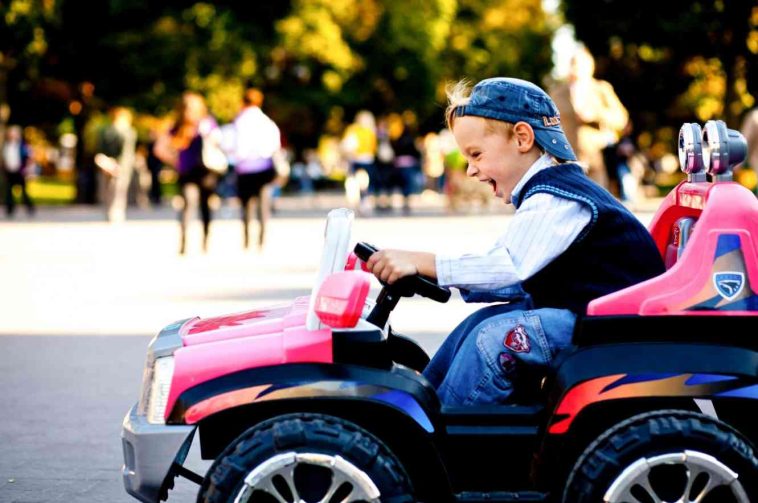Childhood is a formative period where learning and play intermingle, shaping the futures of little ones as they grow and explore their world. One vital aspect of play is mobility, which not only aids in physical development but also boosts confidence and independence. The role of ride-on toys, from cars to bikes, cannot be overstated in this developmental journey.
In recent years, technological advancements have transformed children’s playtime, introducing an array of ride-on toys that are both fun and developmental tools. Among these, kids ride on cars stand out as a popular choice, providing a simulated driving experience that thrills and educates.
The Impact of Ride-On Toys on Child Development
Ride-on toys, traditionally seen as a source of entertainment, hold much more value for the growing child. Their importance in promoting motor skills is significant, as they require coordination of movements and balance. Pushing pedals or operating an electric car’s controls all contribute to fine-tuning a child’s motor skills.
Navigating a kids electric scooter, for instance, helps a child understand the concept of speed, distance, and navigation. This not only enhances their physical abilities but also sharpens their decision-making skills and situational awareness, which are crucial for personal development.
Moreover, ride-on toys like electric scooters and cars invoke a sense of responsibility in children. As they ‘drive’ their miniature vehicles, they learn about safety, the importance of paying attention to their surroundings, and the rules that come with operating a vehicle, albeit in a safe, controlled environment.
Enhancing Social Skills Through Shared Play
Ride-on toys are not only for the solitary rider; they present perfect opportunities for social interactions. When children engage in shared play sessions, they learn the value of sharing, cooperation, and teamwork. Negotiating turns, racing, or simply riding alongside peers teaches them how to interact and communicate effectively with others.
The act of playing together with ride-ons can also foster inclusive play. Children can learn to be mindful of each other’s skill levels and encourage one another, building camaraderie and empathy. Ride-on toys hence serve as more than just playthings; they are instruments for overall personality development and social understanding.
Ride-Ons as Tools for Imagination and Adventure
Childhood is the golden era of imagination, wherein a simple toy can become an entire world unto itself. Ride-on toys like kids motorbike models allow children to engage with their fantasies, creating scenarios where they embark on adventurous journeys or become characters they admire.
This imaginative play is critical for cognitive development. It fosters creativity, problem-solving skills, and the ability to come up with innovative solutions. As children navigate their ride-ons, they also learn about spatial awareness, understanding how different objects in space relate to one and other, which is a foundational cognitive skill.
Advancing with Technology: Electric Ride-Ons
Electric ride-ons have revolutionized the realm of children’s play by integrating modern technology into traditional play patterns. These ride-ons often come with features that mimic real vehicles, such as functioning lights, sounds, and even remote controls. They offer an immersive experience that can also be educational.
Playing with electric ride-ons imbues children with a basic understanding of technology operation, which can be invaluable in this digital age. It sparks an interest in how things work, laying a foundation for potential future interests in engineering, design, and technology.
The practical aspect of recharging and maintaining their toys instills a sense of responsibility in children, offering a rudimentary understanding of energy usage and environmental consciousness, especially as society pivots towards more sustainable modes of transportation.
Considering Safety in Child Mobility
While empowering through mobility and play, safety is paramount when it comes to ride-on toys. Parental supervision is essential, especially with motorized options. Protective gear, such as helmets, should be mandatory to protect the child in case of a fall.
Manufacturers of quality ride-on toys prioritize safety by adhering to stringent standards. These safeguard measures ensure that the toys remain a source of joyful learning rather than risk. It is also crucial for parents to choose age-appropriate ride-ons to match their child’s abilities and development level.
The Value of Confidence and Independence
Perhaps one of the most understated benefits of ride-on toys is the development of self-esteem. As children conquer the manipulation of their ride-ons, their confidence soars. Success in these early stages of learning and play instills a belief in their abilities that can carry over into other life challenges.
The independence offered by these toys also teaches children the importance of solitude and self-sufficiency. Through solo play, they come to understand that they are capable of entertaining themselves, exploring, and problem-solving on their own.
Closing Thoughts
Child mobility toys like ride-on cars, electric scooters, and motorbikes are more than playthings. They are vital instruments in a child’s developmental arsenal, fostering everything from motor and cognitive skills to confidence and social awareness. By thoughtfully selecting and supervising these dynamic toys, parents and guardians can ensure a fun, safe, and enriching experience that empowers children as they play, imagine, and grow.
In a world where children are ever more dynamic and eager to learn, harnessing the fun of ride-on toys is an effective and enjoyable strategy for nurturing the next generation of creative, confident, and competent individuals. Truly, when it comes to personal development for the young ones, fun on wheels never looked so beneficial and promising.





